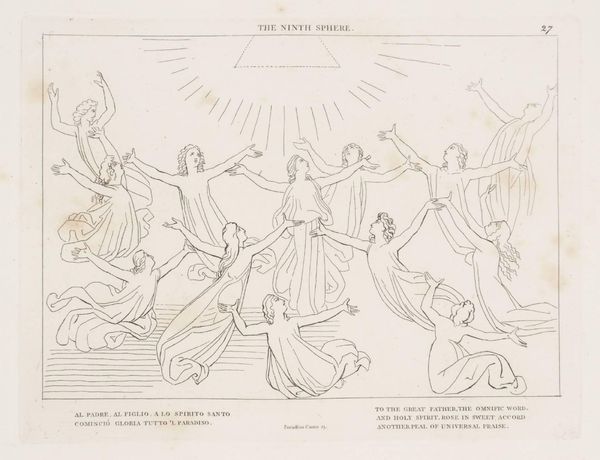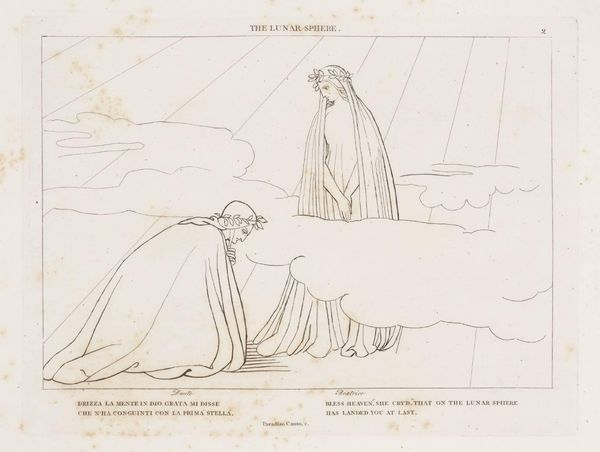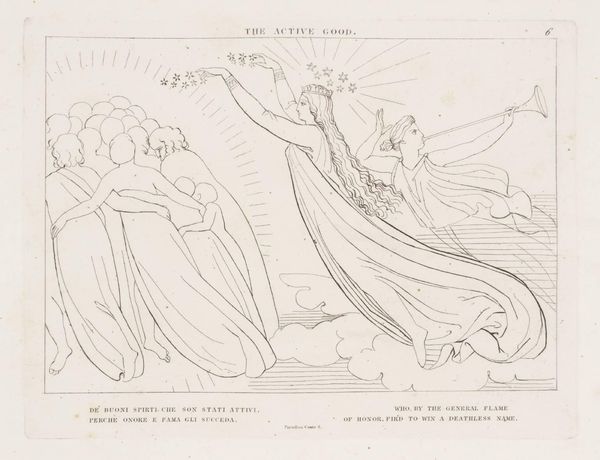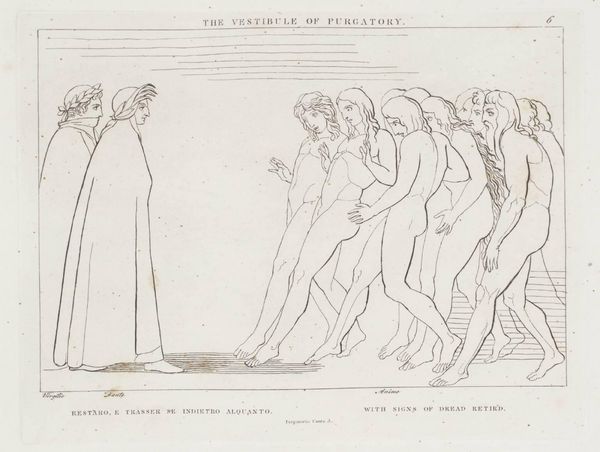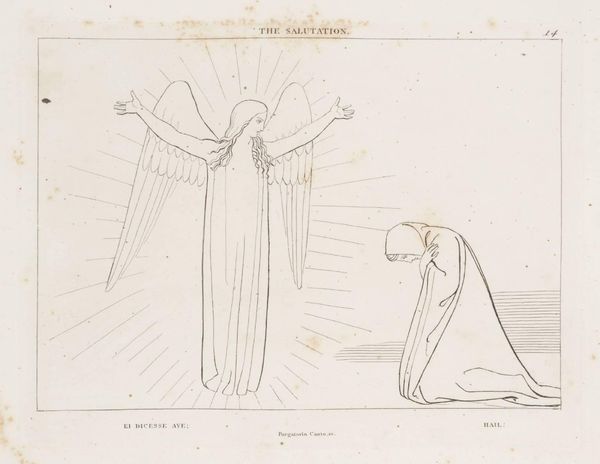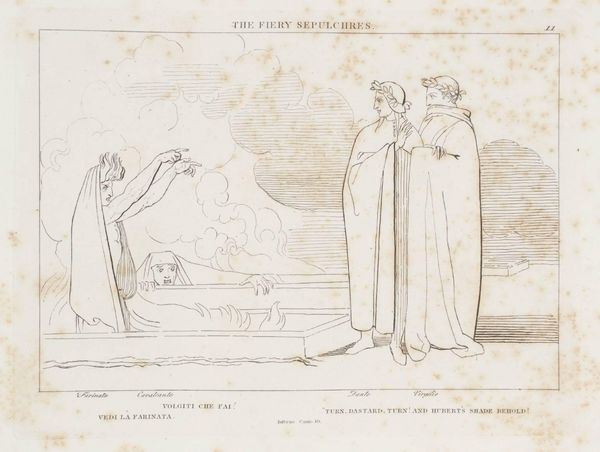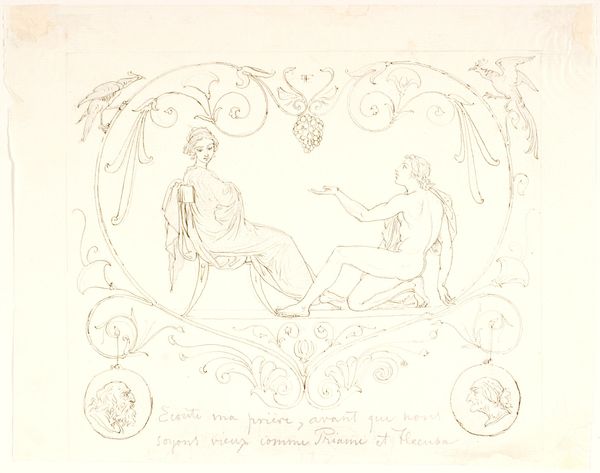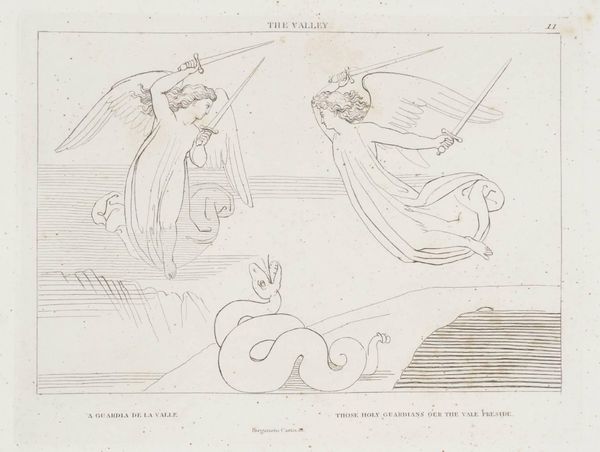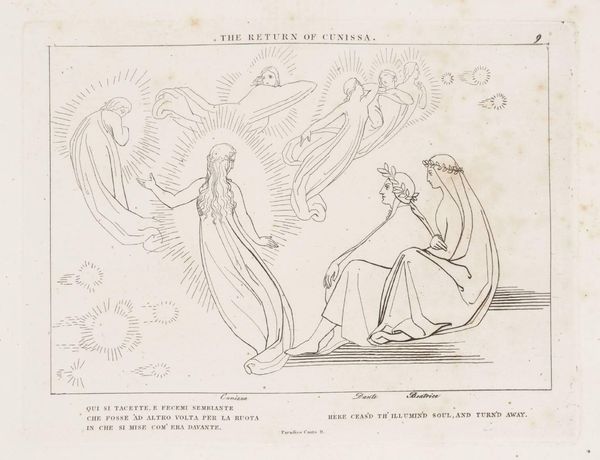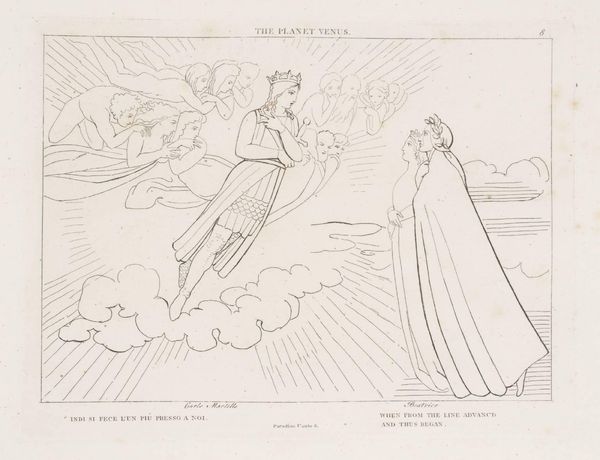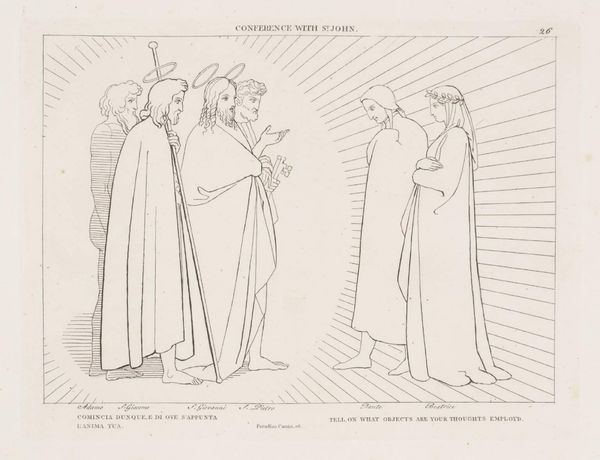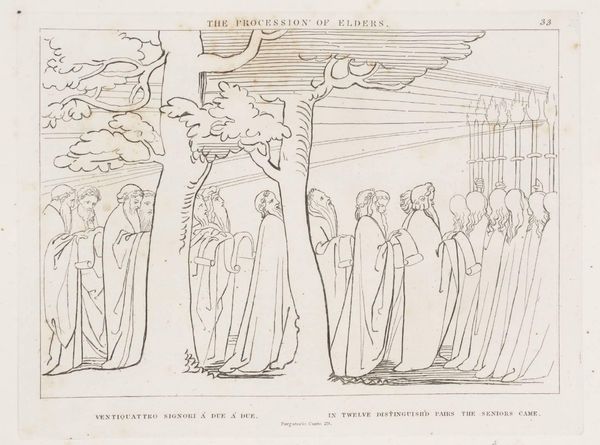
Dimensions: image: 131 x 192 mm
Copyright: CC-BY-NC-ND 4.0 DEED, Photo: Tate
Editor: John Flaxman's "The Bark of Purgatory" is a rather delicate engraving. I’m struck by how sparsely populated the image is, giving it a real sense of quiet anticipation. What social commentary might Flaxman be making here? Curator: The sparse figures actually intensify the political charge. Flaxman was deeply invested in Neoclassicism and its public role. Consider the engraving's distribution: as inexpensive prints, they were accessible to a wide audience, popularizing Flaxman's, and by extension, a particular vision of civic virtue. Editor: So the imagery's simplicity wasn't about aesthetics alone? Curator: Precisely! The purified line, referencing classical sculpture, promoted ideals of reason and order during a time of social and political upheaval. Think about the French Revolution and its impact. Editor: It's fascinating to consider how Flaxman leveraged accessible art to shape public opinion. I'll never look at Neoclassical prints the same way.
